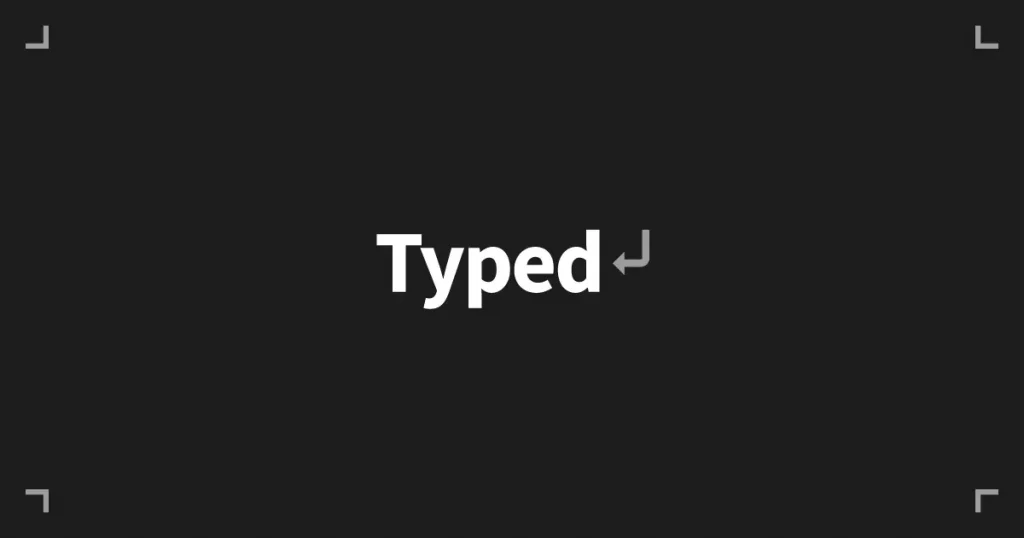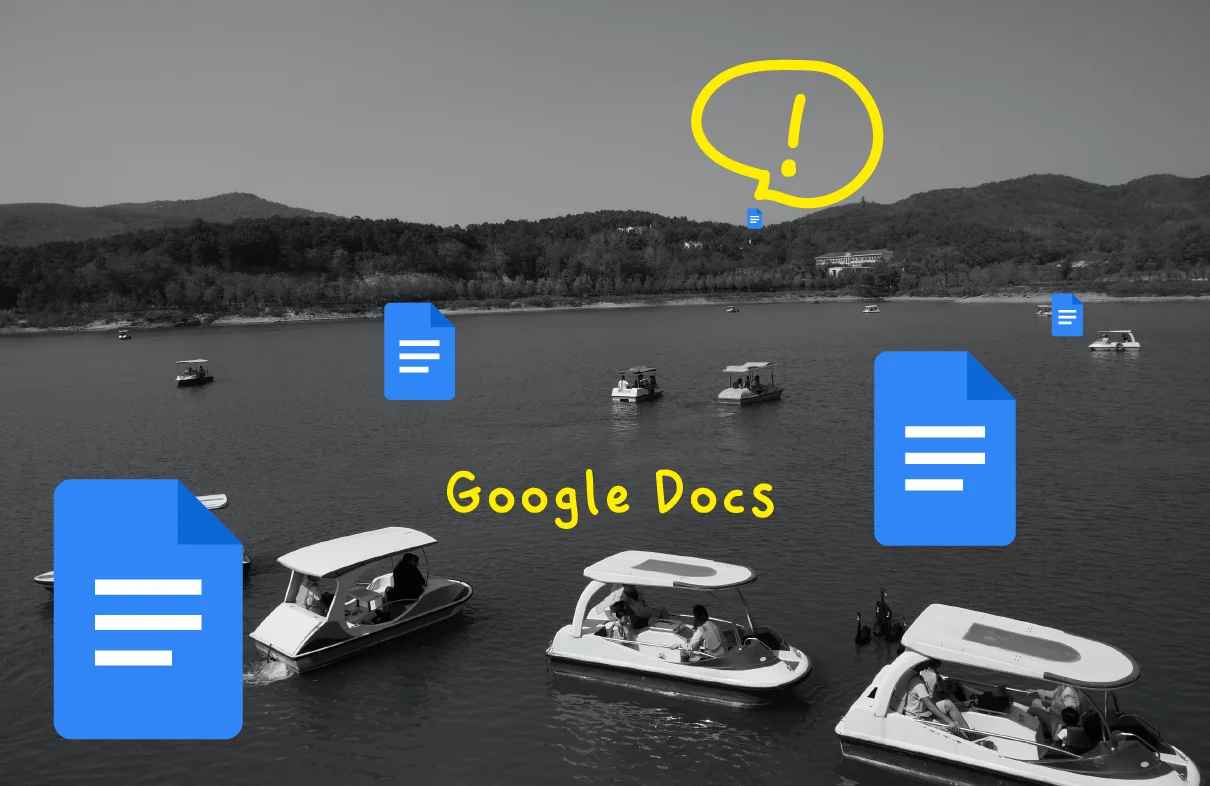In this day and age of information, there comes a need to organize research data or else our productivity will suffer and ultimately cost us, unknowingly, a surprisingly large sum of money. To prevent such unnecessary losses from happening, we need to resource organization software to do so. Software-as-a-Service, also known as SaaS, are any software tools on the internet that provide users with they were initially looking for. Examples of SaaS include, Google Docs, Netflix, Dropbox, etc. The term SaaS essentially anything a company provides for the user, like a “service”. However, in this blog, I’ll be covering a workspace tool, or SaaS, that will help you organize your resources.
A Brief Introduction: Google Docs

Google Docs and Drive services is a SaaS workspace tool and has been a staple for any quick and efficient document creation for many of us SaaS consumers. And it has consistently kept its seat for many years, and most likely many more to come.
When we, SaaS consumers, hear Google Docs, there are a few thoughts that come up. Those thoughts are more often than not extremely polarizing depending on the user. Many are fond of its simplicity, while many loathe it. Many are passionate of its accessibility, yet many despise it. Many are partial to its comfortability, many have a disdain towards it. People’s opinions on Google Docs are so varied and indefinite that there will never be a set result, yet it will always be Google Docs.
The Explanation Behind Google Docs’ Popularity
There are a lot of functions Google Docs fulfills and if I could conjecture, it’s strongest and greatest selling point is its simultaneous shared collaboration feature. This function alone is so incredible and simple that it has the ability to redeem its potential worst qualities. The simultaneous editing feature allows users (owners) to share the link of the document they are planning to work on to other users (editors/viewers). Depending on the users’ permission, which is editing or viewing, users can, expectantly, edit or view. The group work can happen at any time even if other group members are not physically present.
The reason why Google Docs is so powerful in the SaaS market, is undeniably due to its extremely low barrier of entry. With just a Google account and no payment required, users can experience Google Drive in almost its entirety. The only thing Google Docs has a payment plan for is additional storage space, which isn’t compulsory as its “free plan” provides plenty of storage space to begin with. The simultaneity allows users to boost productivity while being accessible to countless users and this combination of being freely and fully accessible is a strong reason why Google Docs is unlikely to drop any time soon.
The Downside of Google Docs
While Google Docs is fulfilling in many ways, it is certainly lacking others. The use of the simultaneous collaboration feature, its defining feature, can only shine during group work, which means when doing solo-work – which is the majority of any user – Google Docs’ value starts to deteriorate faster than an employee’s motivation during weekend overtime. This starts to hurt because Google Drive is infamous for its lack of customization options and its fundamental functions are lacking in comparison to its superior, Microsoft Office. While MS Office costs a lot to an individual, many individuals would still prefer it over Google’s editor due to its many capabilities.
Not only that, but the basis of a group work usually requires a lot of referential information, or outside sources, which can start to get difficult to organize once the number of resources start crossing the unorganizable threshold. Then it gets even more increasingly difficult the more users start to incorporate more resources. The typical flow of resource dump is to clump every website URLs at the bottom most page and document files are typically shared through a Shared Google Drive. That CAN be a solution, however, it is not a permanent one as, unless one of the group members is constantly organizing resources, it will grow uncontrollably. Research organization problems can be solved through using Typed. Using Typed solves such problems and removes any complications and disorders that may arise from using Google Docs while collaborating.
Typed – Organization of Resources on Google Docs Enabled

An organization research tool has a great need for SaaS consumers as it immensely and immediately improves the consumer’s productivity by saving time going through referential data. Typed is a SaaS that is fundamentally a networking, research organization tool. It allows users to directly link resources to a document they have been working on and allows future networking whenever the user happens to use the same resource for a different project. Catchily known as, connecting-the-docs, as you will be able to start networking your work and build on to improve upon it. Further details in the blog, Typed in First Principles.
Typed’s Foundation
Typed, in its current build, is a SaaS product that uses Google’s editor as a foundation. As aforementioned, Google Docs tend to get polarizing reactions, which is something Typed cannot ignore, at least at this very moment. Before Typed develops its own editor, it will have to live with the benefits and detriments of the Google workspace.
Typed is an organization tool. What it organizes will vary from users – otherwise known as Typers – to users, but fundamentally it is aimed towards research resources. When it comes to research or project work, it becomes inevitable to collect referential materials to aid the project, though the amount may differ from project-to-project. However, when collecting references – especially in high quantity – it becomes recurringly and increasingly difficult to manage.
Let us be rhetorical, how often do you say to yourself, isn’t there a better way to reference these? Or a situation where you [alt]-[tab] or [ctrl]-[tab] to the wrong document? Think on it, and think of the frustration that gradually builds up until you reach the point you’re working on a project in such a bad mood, the quality starts to take a toll. Typed solves those issues you will inevitably have or more commonly, had, and congregates all your necessary and related resources to the relevant document (project). By, in essence, assigning sources directly unto your current workspace with the use of its split-view feature omits the potential use of [alt]-[tab] and [ctrl]-[tab].
(For those who have not experienced using [alt]-[tab] and [ctrl]-[tab], they are Windows keyboard shortcuts that let you flip back and forth between open files and tabs.)
I’m sure many of you has had frustrations while working on a stressful project, whether solo or group. Why not relieve some of your cluster of stress by using a tool that organizes your work for you? You’ll be saving your mental state and your mind.
Typed and Google Docs
Currently, as Typed is using Google’s editors as its foundation, it can be limiting to experience. Because Typed supplies a tool that is consequential, it will mean that Typed will ultimately be the users’ final stop. It helps users who collect research resources to end up using it to at least have the simple function of organizing their work. With its plus functions, being able to network your previous work, having a collaboration workspace (soon-to-be implemented), there is near-to-naturally, no possible reason for users to not use it.
Because Typed is still in its growth phase, it undoubtedly means that it is lacking in potential features and functions. On the other hand, however, because it is still developing, its growth is incalculable. With more and more features planned to be congregated with Typed, it will likely implement the freemium model, meaning it will likely have tiers for subscription levels in the future. However, as of now, Typed is accessible with a free trial period.
Any Google Docs users must have experienced the frustration of searching through their resource dumps at the bottom of their Google Docs page, while ultimately clicking on the wrong resource. If there are any SaaS consumers that have such experiences, try out Typed for 30 days and experience the organization yourself. Once you have an organization tool, guaranteed, you will have a much harder time going back to a workspace tool where you have to invest too much time into organizing your work.



